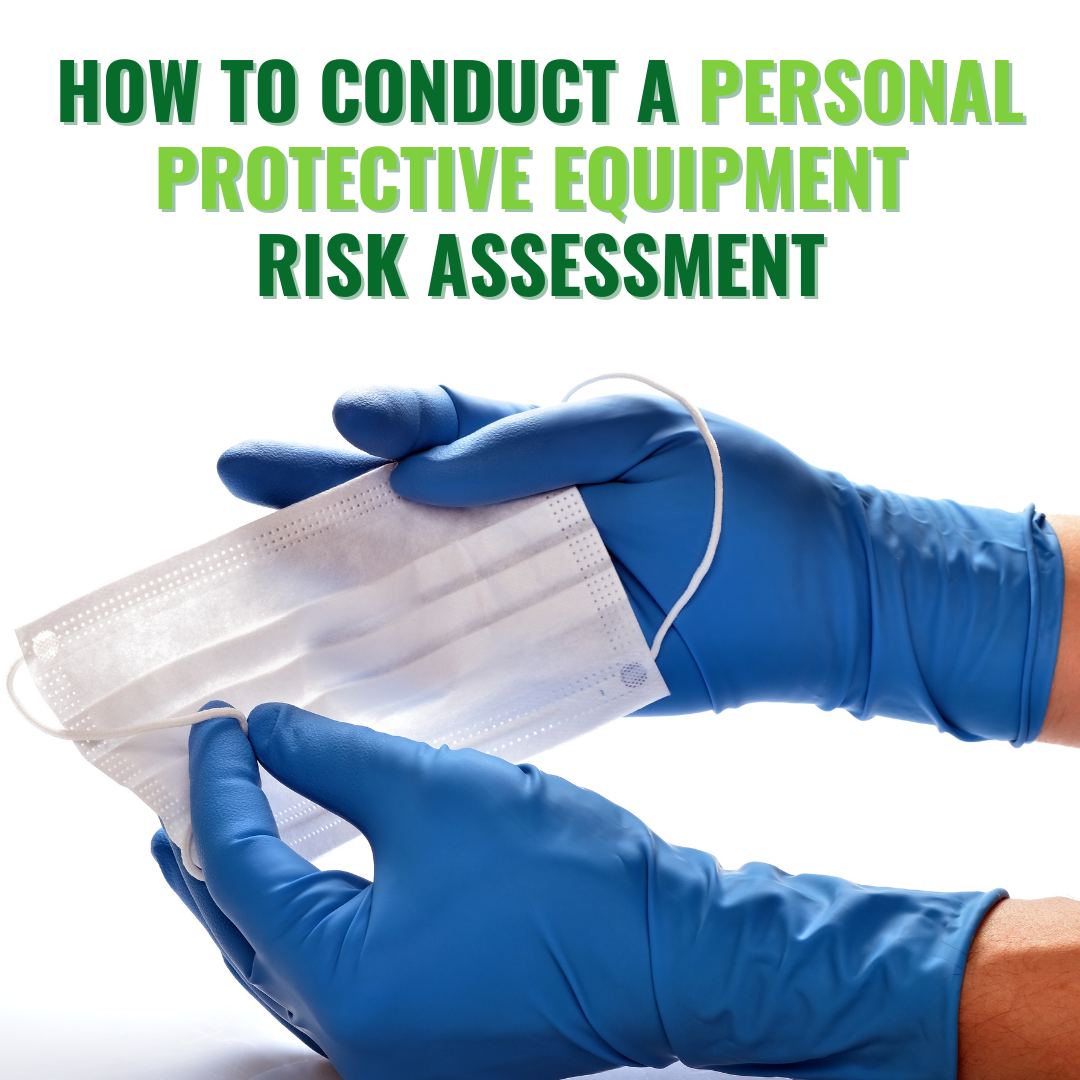We use cookies to make your experience better. To comply with the new e-Privacy directive, we need to ask for your consent to set the cookies. Learn more.
How to Conduct a Personal Protective Equipment Risk Assessment
The Occupational Safety and Health Administration (OSHA) requires employers to provide protective clothing and accessories wherever there’s a risk of injury in the workplace. According to OSHA standard 1910.132(d), this effort begins with a personal protective equipment (PPE) risk assessment. This review of workplace hazards identifies where and when employees must use PPE. Following the PPE risk assessment, OSHA requires employers to:/p>

- Choose the right PPE to protect workers from the risk—and make sure employees engaged in the hazardous task use the indicated PPE (1910.132[d][1][i]).
- Inform all relevant employees of the appropriate PPE associated with the task (1910.132[2][1][ii]).
- Provide PPE that’s fitted properly to each employee (1910.132[d][1[iii]).
- Produce a dated, written document that certifies the completion of the risk assessment, identifies the workplace, and names the staff member or consultant who’s certifying the completed evaluation (1910.132[d][2]).
These standards are written as broadly as possible, so they don’t tell employers exactly how to conduct a PPE risk assessment. Here’s a framework for getting started.
1. Examine existing safety data to uncover likely hazards.
Workers report safety problems. Managers document injuries, illnesses, and near-misses. Safety Data Sheets report chemical risks. All this data can help identify the workplace areas that probably represent hazards and require intervention—but that intervention may not be PPE. According to the Hierarchy of Controls identified by the National Institute for Occupational Safety and Health (NIOSH), PPE is the last line of defense, and if employers can remove the risk in safer ways, they should. So your PPE risk assessment overlaps with a general review of hazards.
If you can use engineering controls to remove the hazard—physically changing the work, adding new equipment, or replacement of harmful materials, for instance—that’s preferable to PPE. So is changing work procedures to keep employees out of harm’s way in the first place. When these interventions aren’t available, however—or when they only provide partial protection—the indicated task or area probably requires PPE.
Use safety reports and documentation of injuries and near misses to identify these hazardous tasks and areas. Improve them with engineering controls if possible. If not, identify the PPE that will best address the hazard. But existing records aren’t sufficient for a PPE risk assessment. You also need to collect new data.
2. Perform a walk-through PPE risk assessment.
Conduct a physical survey of the workplace, watching for potential risks of all kinds. In its 2004 guide to personal protective equipment, OSHA identifies two broad categories of workplace hazards: physical and health-related. The former category includes risk of physical injury, like moving machinery, falling tools, sharp edges, electrical systems, and extreme temperatures. A health-related hazard is a condition that can create illness or damage health over time: exposure to chemicals, breathing airborne particulates, and working around radiation, for example. The walk-through hazard survey must look for both types of risk.
Document these risks and organize them for analysis. Look for potential engineering controls first, and implement those wherever feasible. Then review the data to choose appropriate PPE for controlling the remaining risks.
3. Identify the PPE that’s most effective for each documented hazard.
Workplace risks come in many forms, and so does PPE. For health-related hazards, like exposure to hazardous materials, you may need chemical PPE like Nitrile Chemical Gloves, Chemical/Acid Aprons, and Disposable Face Shields (or, better yet, a comprehensive PPE Kit that includes chemical protection for most of the body). For physical hazards, the best protection might come from hard hats, safety shoes, and protective gloves (leather, canvas, metal mesh, etc.) When making equipment purchases, make sure the PPE you choose meets or exceeds the relevant standard from the American National Standards Institute (ANSI) and/or guidelines from NIOSH.
Of course, this risk assessment is just the beginning of a strong PPE program, which also includes training, proper use, and maintenance—as well as ongoing review. Personal protective equipment risk assessments should be completed periodically. To learn how PPE from Solus Group can help support your PPE program at any stage of development, call us at 314-696-0200.
